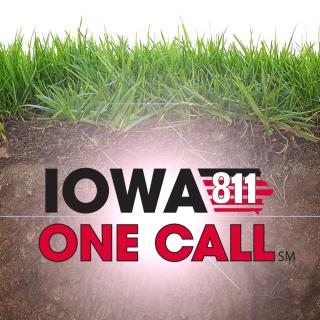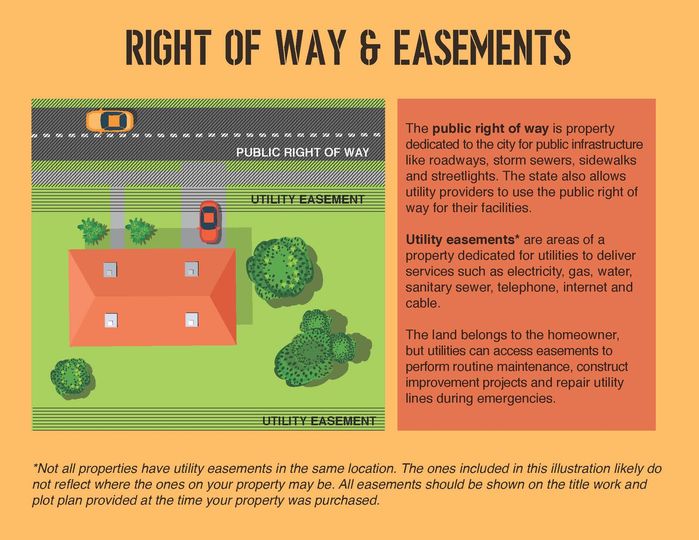The 4-1-1 on Utility Easements (or should we say 8-1-1?)

Most property owners own property with a utility easement.
WHAT ARE UTILITY EASEMENTS?
An easement is the right to use part of a property without owning it. A deed should describe all of a property’s public and private usage rights, which are typically provided to property owners upon the purchase of a property.
Utility easements are one of the most common types of easements for private property, which generally allow public utility companies access to the property for the purpose of installing, repairing, and maintaining utility lines. These include overhead electric, telephone, and television lines and underground electric, water, sewer, telephone, and cable lines. They exist because it’s significantly more efficient for utility companies to run lines in straight-through neighborhoods rather than around individual parcels of land. Public and private services are both available for locating underground utility lines, depending on the nature of the easement.
WHERE ARE EASEMENT SPECIFICATIONS OUTLINED?
For many property owners, the first issue is understanding what entity is responsible for defining utility easements and where they are written down.
Easements are specified in a property deed, which is typically recorded at the Polk County Recorder's Office.
Easements can also be found on the final plat residential properties. This information can also be found at the Polk County Recorder's Office.
WHO IS GRANTED ACCESS WITH A UTILITY EASEMENT?
Easements are typically designated for a particular use and only grant certain parties the right to access it. They can allow public or private entities to access the property, and may permit or prohibit specific activities. A right-of-way is a similar concept that generally permits non-owners to pass through the property without defining the specific parties allowed to do so.
A deed should describe the easements on the property in detail. Utility easements generally allow only employees of the utility company or municipality to access the property. Even then, they may only do so for the purpose of servicing the utility lines.
PUBLIC UTILITY LINES
The phone number 811 is used in the United States to access public utility location services, also known as “Call Before You Dig” services. In 2005, the Federal Communications Commission (FCC) made 811 the universal number for the regional services that coordinate these location services. Each of these regional services had its own 800 number before that date, making it more difficult for property owners to locate utilities on their property.
Public utility location services serve as a safety measure to prevent damage to underground lines that carry utilities such as power, water, or natural gas. State laws generally require you to call 811 before you begin digging in a utility easement, right of way, or public property, giving the utility company time to mark the location of underground lines before you start excavating. These markings are color-coded to indicate the specific utility. Marking services should be done at no charge. Lines usually need to be marked again if digging hasn’t begun before a certain period of time, usually around 10 days.
Utility companies mark the location of utility lines up to the user’s service connection or meter but not past it. Lines beyond this point are considered to be part of the customer’s property, so they usually aren’t marked by public locating services.
Utility companies need access to these easements for maintenance purposes or to establish new services. Please try to realize that the utility contractors are responsible to put things back the way they were prior to the work. It's suggested to get a business card from anyone doing work within your property - establish a point-of-contact.

The state has no specific requirement indicating a utility contractor must notify property owners, so you must allow the work to be done. For more information visit: https://members.iamu.org/

